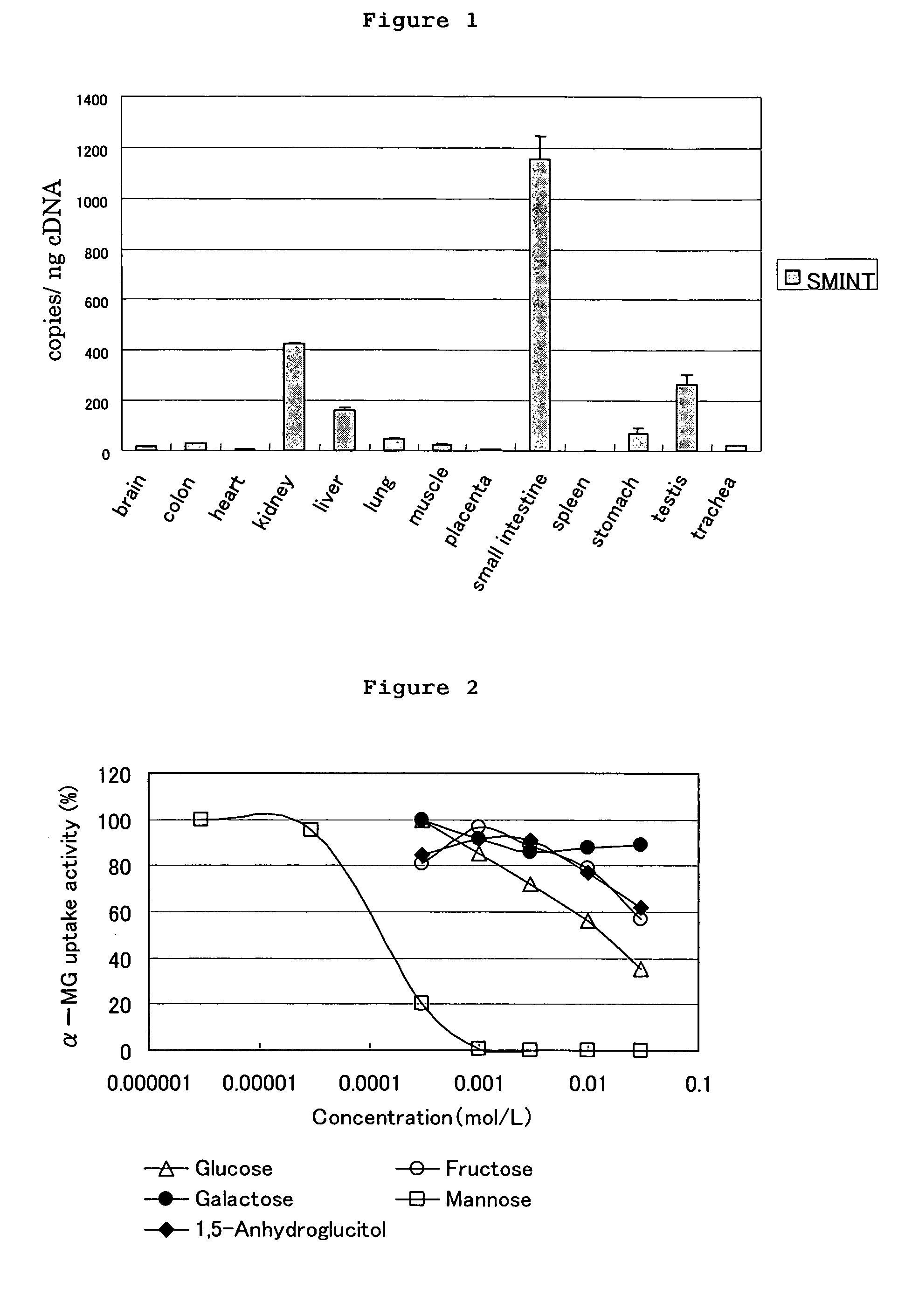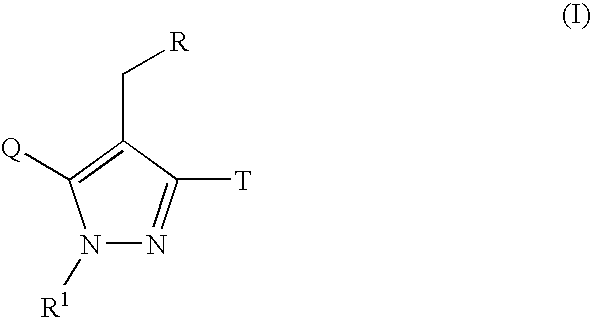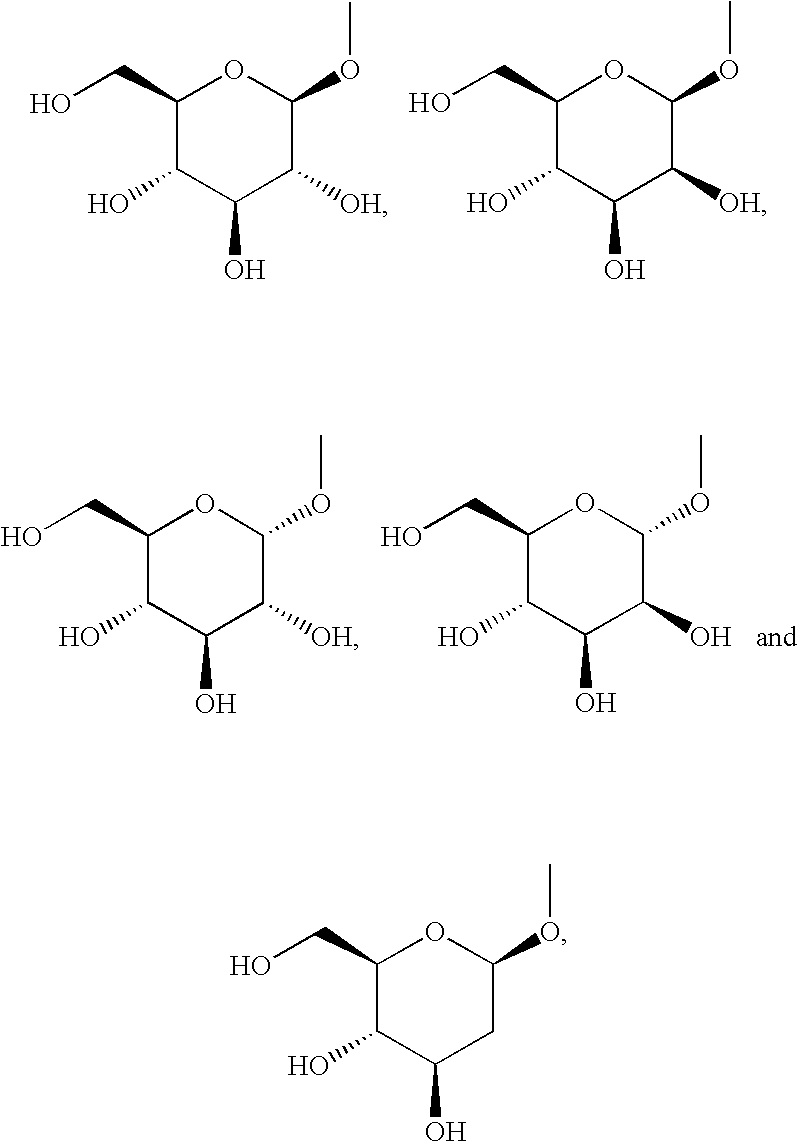Pyrazole derivative, drug composition containing the same and production intermediate therefor
a technology of pyrazole and derivatives, applied in the field of pyrazole derivatives, can solve the problems of affecting the control and continuous performance of biguanides and sulfonylureas, affecting the production of pyrazole derivatives, and sulfonylurea exacerbation may have a risk of diabetic complications,
- Summary
- Abstract
- Description
- Claims
- Application Information
AI Technical Summary
Benefits of technology
Problems solved by technology
Method used
Image
Examples
reference example 1
Ethyl 3-hydroxy-1-isopropylpyrazole-4-carboxylate
[0203]To a solution of sodium methoxide (23 g) in ethanol (150 mL) were added diethyl ethoxymethylene malonate (32.7 g) and isopropyl hydrazine (11.2 g) at room temperature. The mixture was stirred at 80° C. for 4 hours and stirred at 100° C. for another 2 hours. The reaction mixture was poured into 2 mol / L hydrochloric acid (300 mL). After the mixture was diluted with brine, the mixture was extracted with ethyl acetate. The organic layer was washed with brine and dried over anhydrous magnesium sulfate. The solvent was removed under reduced pressure and the obtained residue was purified by column chromatography on silica gel (eluent: ethyl acetate / hexane=1 / 5) to give 10.5 g of the title compound.
[0204]1H-NMR (CDCl3) δ ppm: 1.35 (3H, t, J=7.0 Hz), 1.48 (6H, d, J=6.7 Hz), 4.20-4.40 (3H, m), 7.60 (1H, s)
reference example 2
Ethyl 5-bromo-3-hydroxy-1-isopropylpyrazole-4-carboxylate
[0205]Ethyl 3-hydroxy-1-isopropylpyrazole-4-carboxylate (10.5 g) was dissolved in dichloromethane (100 mL) and to the stirred solution was added N-bromosuccinimide (14.1 g) under ice cooling. The reaction mixture was stirred at room temperature for 6 hours. The solvent was removed under reduced pressure and the obtained residue was purified by column chromatography on silica gel (eluent: ethyl acetate / hexane=1 / 5) to give 5.9 g of the title compound.
[0206]1H-NMR (CDCl3) δ ppm: 1.39 (3H, t, J=7.0 Hz), 1.44 (6H, d, J=6.6 Hz), 4.37 (2H, q, J=7.0 Hz), 4.60-4.80 (1H, m), 8.34 (1H, s)
reference example 3
Ethyl 3-benzyloxy-5-bromo-1-isopropylpyrazole-4-carboxylate
[0207]Ethyl 5-bromo-3-hydroxy-1-isopropylpyrazole-4-carboxylate (5.8 g) and potassium carbonate (3.5 g) were suspended in N,N-dimethylformamide (50 mL) and to the stirred suspension was added benzyl bromide (2.76 mL) under ice cooling. The mixture was stirred at room temperature for 6 hours. The reaction mixture was poured into 1 mol / L hydrochloric acid (100 mL) and the mixture was extracted with ethyl acetate. The organic layer was washed with brine and dried over anhydrous magnesium sulfate. The solvent was removed under reduced pressure and the obtained residue was purified by column chromatography on silica gel (eluent: ethyl acetate / hexane=1 / 5) to give 7.7 g of the title compound.
[0208]1H-NMR (CDCl3) δ ppm: 1.35 (3H, t, J=7.1 Hz), 1.42 (6H, d, J=6.6 Hz), 4.30 (2H, q, J=7.1 Hz), 4.60-4.80 (1H, m), 5.32 (2H, s), 7.20-7.60 (5H, m)
PUM
| Property | Measurement | Unit |
|---|---|---|
| temperature | aaaaa | aaaaa |
| temperature | aaaaa | aaaaa |
| temperature | aaaaa | aaaaa |
Abstract
Description
Claims
Application Information
 Login to View More
Login to View More - R&D
- Intellectual Property
- Life Sciences
- Materials
- Tech Scout
- Unparalleled Data Quality
- Higher Quality Content
- 60% Fewer Hallucinations
Browse by: Latest US Patents, China's latest patents, Technical Efficacy Thesaurus, Application Domain, Technology Topic, Popular Technical Reports.
© 2025 PatSnap. All rights reserved.Legal|Privacy policy|Modern Slavery Act Transparency Statement|Sitemap|About US| Contact US: help@patsnap.com



